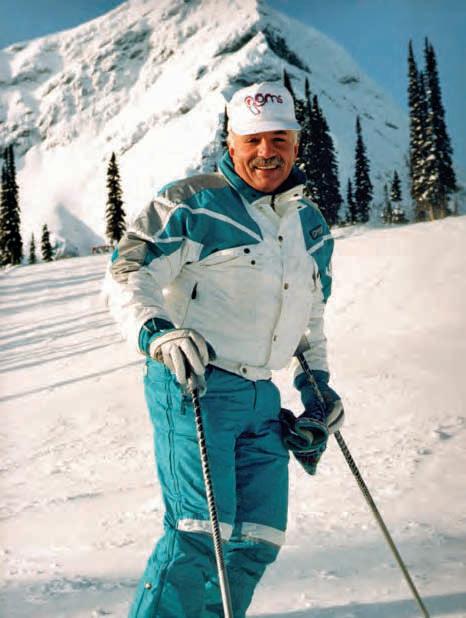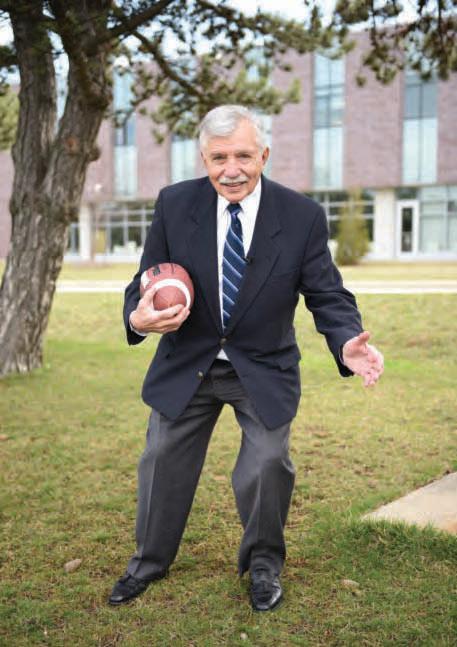
9 minute read
A Man for all Seasons



Pro footballer, horse breeder, fi nancier—Bill Graham ’51 lived a life of determination, action and fun



arly last fall, HSC Review commissioned a story on an alumnus we felt would be interesting and inspiring to the HSC community—fi nancier Bill Graham ’51. As our process developed, Bill was suddenly diagnosed with cancer. A few weeks after our fi nal interview and just days after the story was complete, Bill died on Jan. 2, 2020. What follows is a lightly adapted version of our planned feature profi le.



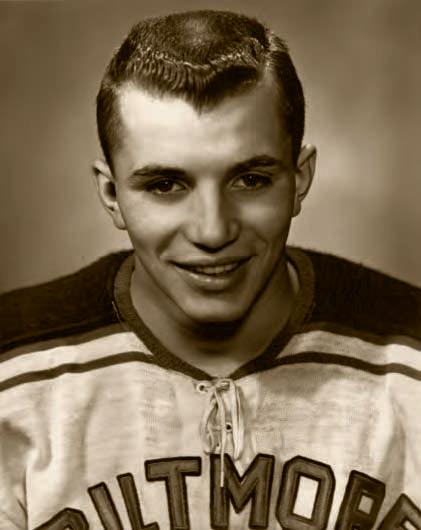






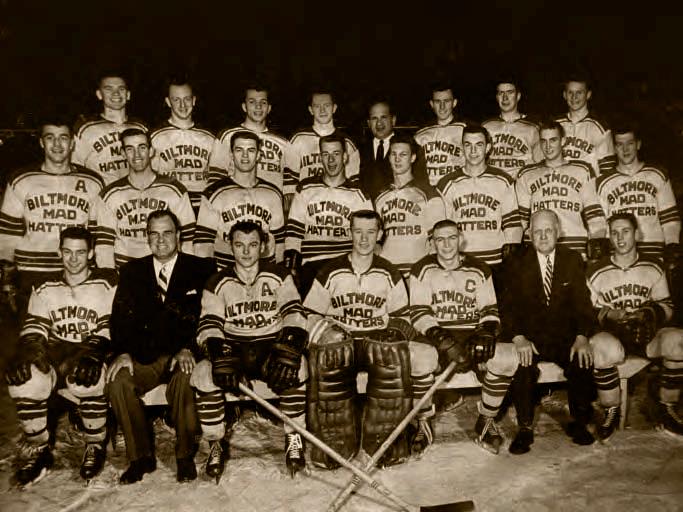


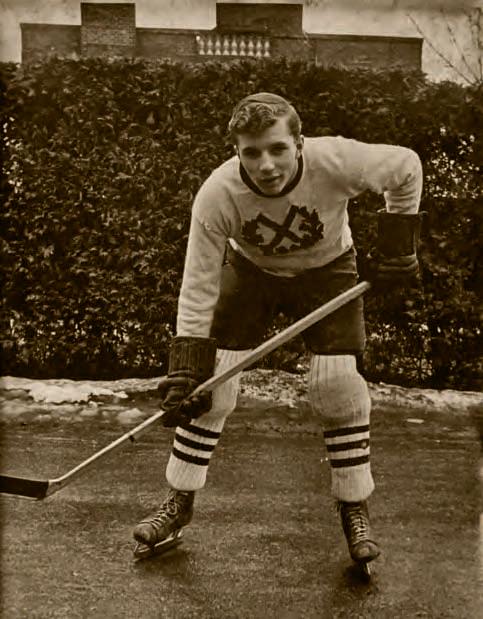
IF BILL GRAHAM HAD A SPIRIT ANIMAL, IT WOULD HAVE BEEN THE CANADIAN HORSE. Hardy and wellmuscled, it’s an intelligent all-rounder, small in stature but full of personality. It’s known as “the little iron horse” for its amazing stamina and endurance. According to Canadian horse breeders, the Canadian Horse generates more power per hundred pounds of body weight than a ny other horse breed.
Nicknamed “Billy the Kid” by his teammates, Bill was 18, fi ve-foot-seven and 165 pounds when he played halfback in his fi rst of four Grey Cups with the Hamilton Tiger-Cats in 1953. While he was rather small for a footballer, Tiger-Cats head coach Bill Trimble called him “pound for pound, the toughest man in Canadian Football” at the time. With so much in common, it seems inevitable that Bill Graham and the Canadian Horse would come together. After a successful career in investment management, including founding University Scholarships of Canada (USC), a non-profi t organization specializing in registered education savings plans where he was president and majority owner, Bill wanted a change. He bought a 400-acre farm on the Bruce Peninsula and added a few riding horses. But after reading about the Canadian Horse in Canadian Geographic, he was smitten.
“I share a lot of the characteristics of the Canadian Horse so I identify with it easily,” Bill told me last November. “They’re noted for their strong character and their determination to go through the snow in Canada and never give up. That’s me.”
Bill decided he’d like to breed and show them. Then, after watching a horse driving competition near Orangeville, Ont., he wanted to do that too. Bill knew how to ride from camp as a kid, but combined driving is a challenging equestrian sport involving lightweight, manoeuvrable carriages in three events: dressage, obstacles and a crosscountry marathon. Spills are common.
“The Canadian Horse is more of a driving horse, so I thought it’d be pretty neat to drive them myself,” Bill said. “I have a knack of wanting to be the boss when I get involved in things. So I tracked down Dr. George Raymond Cormack, the top person in the driving industry, and went to visit him at Tralee in Caledon.”
When Bill announced he wanted to learn to drive horses, Cormack took him out to the barn where top driver Jack Braithwaite was looking after the horses.
“So Dr. Cormack says, ‘Jack, I’d like you to meet Bill Graham. I said you’d train him to learn how to drive,’” Bill recalled. “Well, the guy almost fell down a stall. Five days later I was out in his fi eld learning to drive. It was that determination coming in.”
Bill ended up as a Canadian driving champion in the year 2000 at age 64, representing Canada at a world equestrian event, as well as becoming president of the Canadian Driving Society. At every stage, determination was the defi ning characteristic of Bill’s life.
It helped him through some diffi cult early years in Hamilton, where he was born and raised. His mother was busy as a successful fl orist and his ex-footballer dad was in the navy and often away, so Bill, an only child, stayed mostly with his grandparents or at boarding school.
An outspoken, scrappy kid, he was grateful his parents put him into independent schools. He credited Hillfi eld School (the boys’ forerunner of HSC) and St. Andrew’s College (where he was later a board member) for saving him by giving him the skills to navigate life and by developing his prodigious athletic gifts. A favourite memory was legendary Hillfi eld headmaster Arthur F. Killip teaching him how to play chess when he was kept in after school. And Bill treasured a photo where he’s surrounded by medals, cups and pennants won in 1951 at Hillfi eld, when he captained the undefeated football team and co-captained the hockey team.
“I was very lucky to have a private-school education,” Bill said. “They offered a lot of athletics that a public school couldn’t have done. Sports taught me how to get along because they’re all about teams and supporting your teammates. It was the key to my life.”
Bill was 17 and home fro m school for the summer when he heard about a training camp that the Hamilton Tiger-Cats old boys association put on for students, so he hopped on his bike and went. Before he knew it, he was in their preseason and regular games, stretching into 1953.
“All the guys were quite a bit older, but the core values I learned at school made it easier to navigate the hazards,” said Bill. “I wasn’t a drinker. I knew how to get along, be polite and
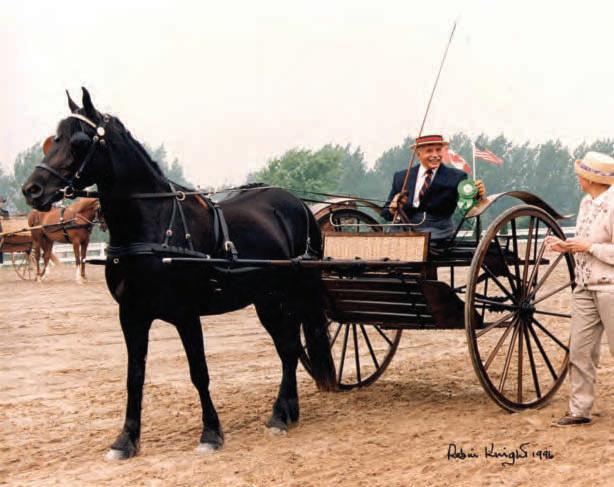




speak well. I’d had a diffi cult upbringing, but I could tie a tie and wear a jacket. In private school, those things are well grounded into your being. I was in the Grey Cup that year, winning 12-6 over the Winnipeg Blue Bombers. I was fl ying.” By then Bill had graduated and he went on to play in three more Grey Cups, winning again in 1957 and losing twice, in 1958 and 1959, all against the Winnipeg Blue Bombers. During those years, he also played junior hockey, going on to play in the 1960 World Hockey Championship. In 2017, Bill was inducted into the HSC Athletic Hall of Fame and won the Heritage Award. Football remained his fi rst love.
“It’s such a physical game,” Bill said. “We used to line up against each other in practice and try various punches. I’d go for the biggest guy on our team to see what I could do. It turned out to be very good strategy. I had some extra bruises but it was fi ne. I think that’s one of the things that made my life a success, being able to take on the tough side and make it go.”
After leaving pro football in 1960, Bill made a career in the investment industry, starting out by playing the stock market. He found it fun, so he got a job marking the chalk board in a stock offi ce in Guelph, like you see in old movies.
“I enjoyed the action, because up until then my life was sports, which was action,” Bill said. “From there I joined an investment fi rm, James Richardson, and before I knew it, I was selling. I’ve always had a knack for selling.”
Bill moved to Toronto, rising into senior management and working for several companies before running his own investment fi rm. Founding University Scholarships of Canada was next.
“It just exploded with 16 offi ces right across Canada,” said Bill. “It was very successful and we were looking at expanding into the U.S. when I decided I wanted to do something different.”
Bill stayed in the fi nancial business but focused on investing USC money through The International Scholarship Foundation, a not-for-profi t Canadian corporation that assists Canadian families and supports higher education. He

Bill ended up as a Canadian driving champion in the year 2000 at age 64, representing Canada at a world equestrian event. At every stage, determination was the defi ning characteristic of Bill’s life.
was also spending summers camping with his wife Patricia and six daughters on the Bruce Peninsula, a natural outdoor paradise.
“We wanted to have a permanent place up there and were inclined towards farming,” said Bill. “Before I knew it, I had Graham Farms and 34 horses. It’s totally different from football or the professional fi nancial industry. Holy mackerel! It was a good way to de-invest my money.”
Bill became involved with the Bruce Trail and at his death was still on its board as chairman of the Sources of Knowledge Forum of the Bruce Peninsula. He continued to breed the Canadian Horse until 2017, when he sold the farm. While he lived in Clarkson, Ont., he and family members maintained cottages near Little Pike Bay on his beloved Bruce Peninsula. Patricia died in April 2019.
Looking back at 84, he felt that family and friends were what mattered to him most.
“I’ve always had great friends,” Bill told me, by then engaged in his battle with cancer. “I get calls daily from old friends, school friends who go right back to when I was young. My friends are a lifelong passion too. Isn’t it great?”
